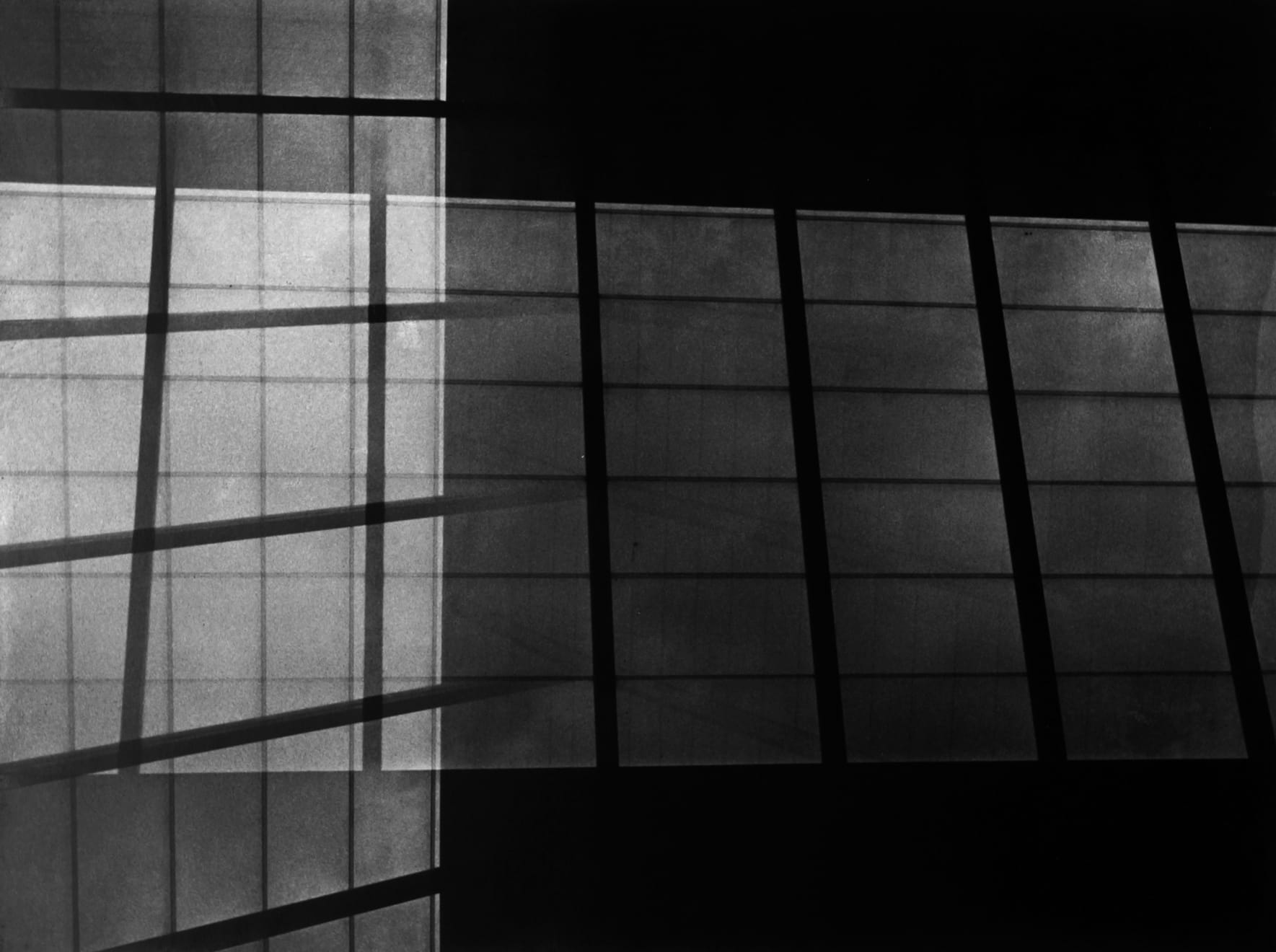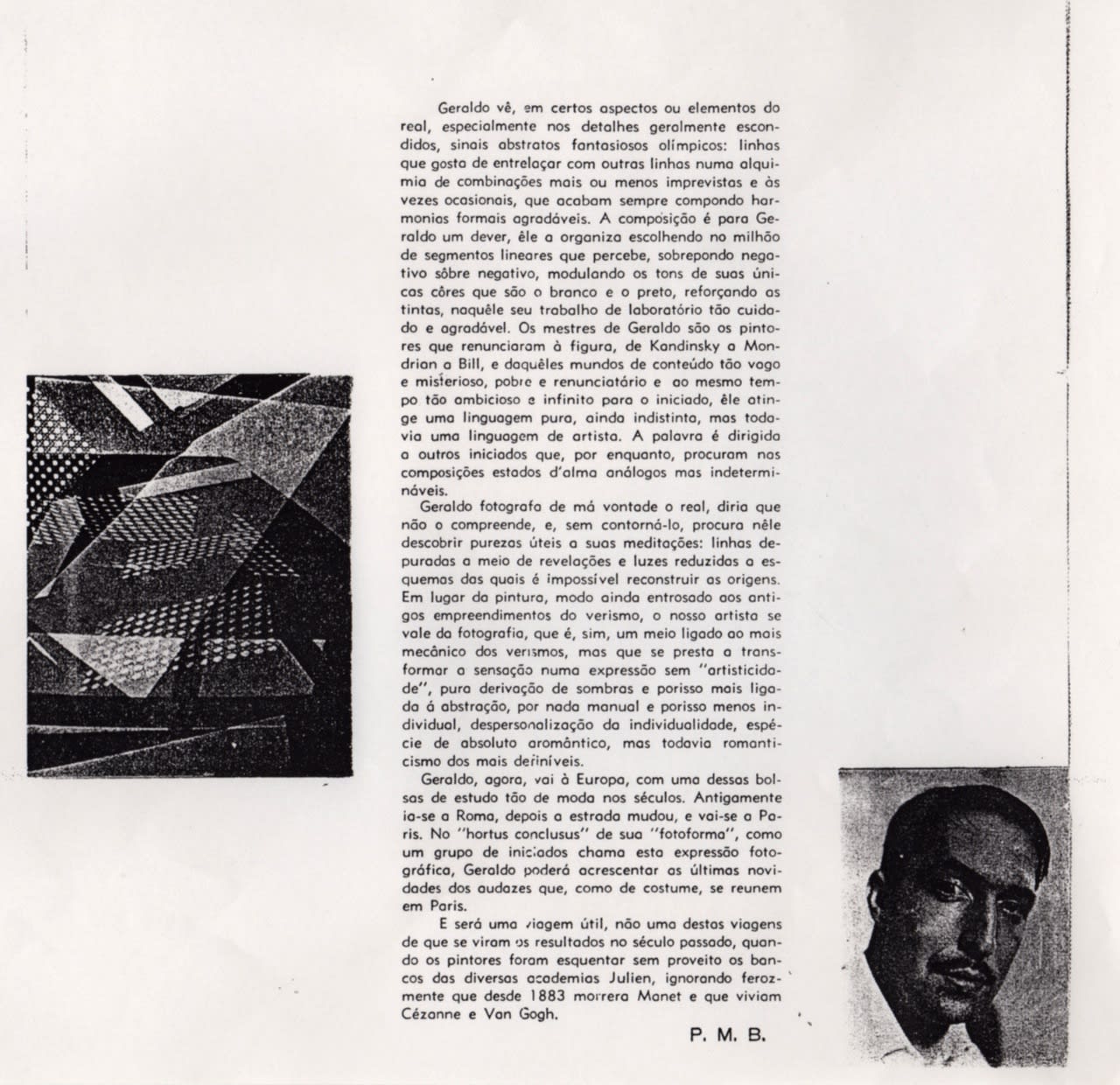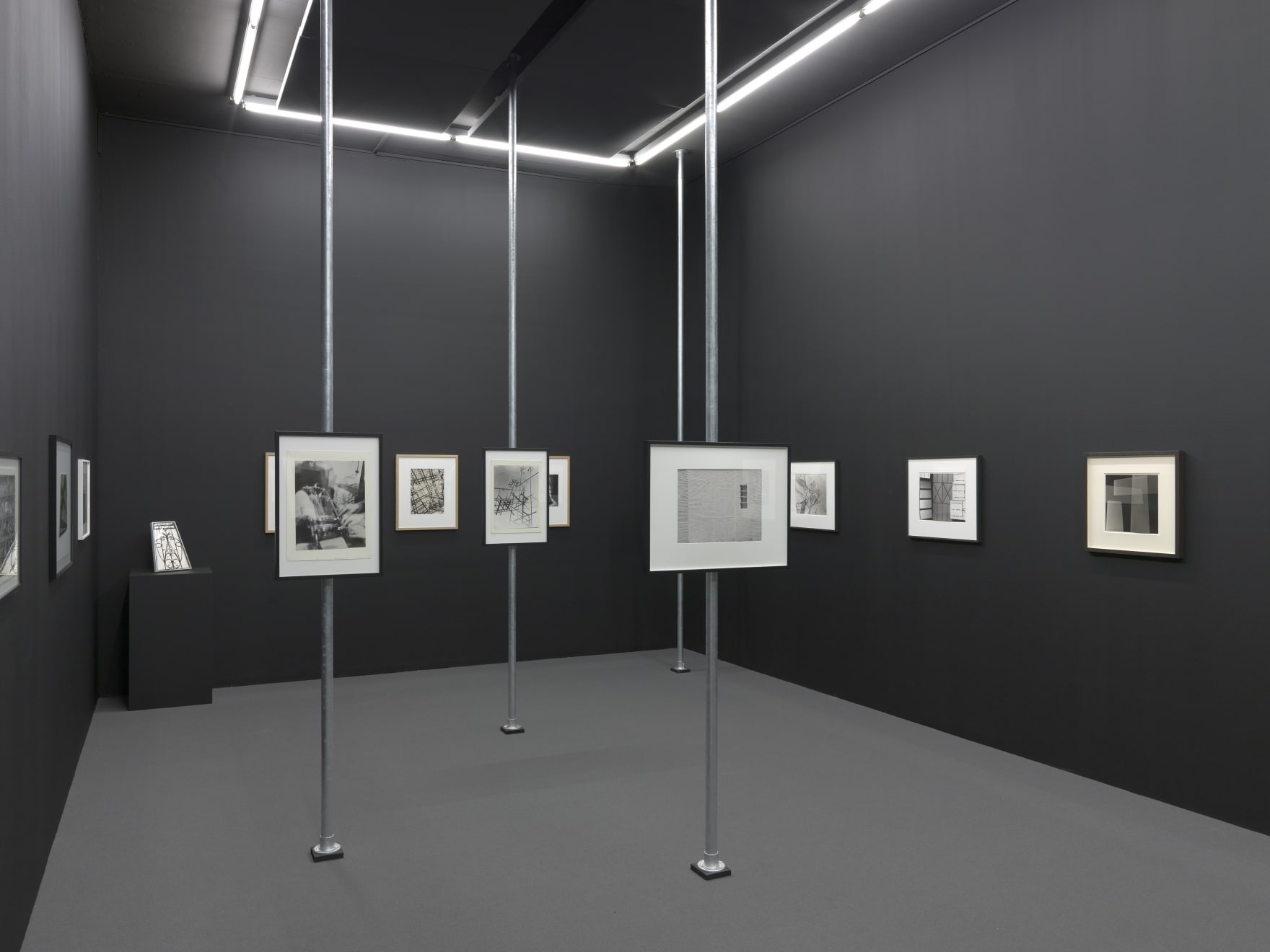-
Obras
Open a larger version of the following image in a popup:
texto escrito por Pedro M. Bardi para exposição de Geraldo de Barros no Museu de Arte de São Paulo, 1949
text written by Pedro M. Bardi para exposição de Geraldo de Barros at Museu de Arte de São Paulo, 1949
Open a larger version of the following image in a popup:
Geraldo de Barros, Musée d’Art Moderne et Contemporain Geneve, Genebra, Suíça, 2022©Annik Wetter.
Geraldo de Barros
Fotoforma, São Paulo, Brasil, 1949/1977superposição de imagens no fotograma, gelatina e prata sobre papel
multiple-exposure on the negative, gelatin silver print on paper29,5 x 40 cm
11.61 x 15.75 ined vintageFurther images
Geraldo de Barros is a key name of 20th-century Brazilian art. Combining his first studies on painting with a later interest in photography, he pushed the envelope of the traditional photographic processes, questioning the classic rules of composition. Geraldo de Barros took a formal concern – as clearly seen in Brazilian concretism, in which participated intensely – and managed to merge this with his social concerns, leading him to approach the industrial processes in his work, dealing coherently with geometric constructions, reproducibility, the socialization of art, the theory of form and industrial design.The series Fotoformas [Photoforms], in turn, gave its name to the first exhibition of modern photography in Brazil (1950, MASP) and marked a turning point in bringing photographic practice closer to artistic language. Through these works, Geraldo de Barros experimented with new methodologies, exploring the potential of photographic processes and their technical apparatus while also developing a new way of seeing photography through abstraction and constructivism.A série "Fotoformas" deu nome a primeira exposição de fotografia moderna no Brasil (1950, MASP) e abriu as portas para aproximar a prática à linguagem artística. Foi através delas que Geraldo de Barros experimentou novas metodologias, explorando as potencialidades do processo fotográfico e de seus aparatos técnicos, desenvolvendo uma nova lógica de olhar a fotografia, a partir da abstração e do construtivismo.1de 6





